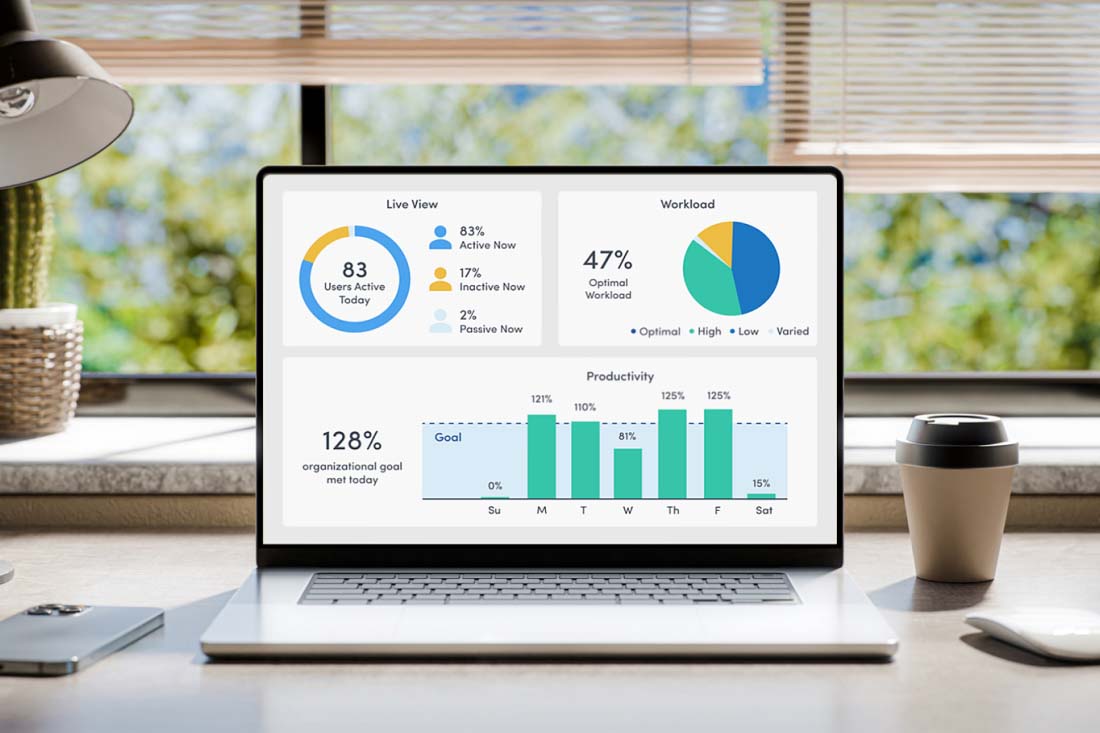The goal has always been to foster a highly productive workforce, but the methods and tools required to achieve it have changed
Aside from inflation, few topics today generate as much digital ink as employee monitoring. The business press, and even some mainstream news outlets, are filled with articles expressing concerns on the topic — that it’s intrusive, it’s a form of spying, it undermines trust and it damages morale. When monitoring software takes the form of surveillance, these concerns are valid. But they’re a distraction from the real purpose and benefit of tools that provide greater visibility into our modern digital work environment: tools that support a culture and environment where employees thrive and deliver their best work. By focusing on what we want to achieve we can use workforce analytics as a powerful solution to engage and empower our teams, rather than control and micromanage them.
Workplace surveillance is counterproductive
Workplace surveillance, which includes practices such as keystroke logging, email monitoring and capturing images or videos from an employee’s webcam, feeds directly into the narrative Microsoft CEO Satya Nadella labeled “productivity paranoia.” In this environment, employees feel constantly watched and judged, which creates a sense of mistrust and resentment that can erode morale and productivity.
Studies show that employees who feel constantly surveilled are more likely to disengage, or “quiet quit,” and are less likely to give their best effort. In other words, if the goal is to create an engaged, motivated and productive workforce then implementing surveillance tools is counterproductive.
There are legal considerations as well. Depending on the laws and regulations in your jurisdiction, excessive employee surveillance may be a violation of their privacy rights. This can open your company to legal challenges and liabilities that are costly and damaging to your reputation. Forrester judges this risk to be so real they included it in their 2023 predictions.
Modern work needs analytics, not surveillance
In the modern digital workplace, data and analytics are required to better understand how work gets done today, and improve how it gets done in the future. In other words, it requires workforce analytics. This includes tracking metrics such as productivity, focus and collaboration time, as well as application usage and process flows. By aggregating data across an entire team, function or organization, patterns — based on real world data — help leaders understand for the first time exactly how the inputs (people, process and technology) lead to the outputs of the company.
These analytics help companies better understand the implications of company norms and policies and react faster to employee feedback.
Recently, one of our customers took action to address meeting fatigue by introducing a new policy to eliminate Zoom meetings on Friday. Workforce analytics data clearly showed meetings weren’t actually decreasing in number, but rather getting squeezed into the rest of the week — and thus “Zoom fatigue” persisted. Armed with this finding, the company set out to streamline and make meetings more efficient, regardless of the day of the week, and successfully reduced meeting fatigue, increased productivity and improved the overall employee experience.
Data-driven insights can pinpoint and help eliminate friction
One of the most powerful benefits of workforce analytics is the ability to identify and address the frictions and obstacles that prevent employees from getting work done. By monitoring employee digital activity, managers can better understand the challenges and pain points employees face on a daily basis. This information can then be used to partner with employees to improve processes and eliminate bottlenecks that hinder productivity and engagement.
This is a common story we hear from customers, who leverage the insights they get from ActivTrak to go deep with specific teams who struggle to meet objectives.
Armed with workforce analytics insights, leaders can identify specific areas of concern and engage directly with affected employees to learn how broken processes, ineffective tools or communications breakdowns impede their ability to get work done. With an emphasis on resolving the friction versus just identifying it, the same data often reveals how different teams go about work differently, empowering leaders to apply insights about what works to remediate pain points felt elsewhere in the organization.
In our modern distributed workforce, it can be difficult to identify these frictions without workforce analytics to shine a spotlight on the issue.
It’s time to meet employees where they are
For workforce analytics to be effective, it’s important to ensure employees understand and trust the data collection process. This means being transparent about the data being collected, how it is used and who has access to it.
By being open and transparent, leaders can build trust and confidence with employees, and avoid the perception they use data to spy on or control employees. This is one reason we created the Productivity Lab, a dedicated group of experts who specialize in effective change management, communications and adoption activities associated with workforce analytics. It’s no surprise, companies that clearly communicate to and collaborate with their employees achieve the best outcomes.
Workforce analytics also help leaders define and enable policies and practices that support remote and hybrid work. By tracking metrics such as productivity, engagement and collaboration, leaders gain insight into ways to better support employees so they thrive in remote and hybrid environments. In turn, employees realize greater flexibility and freedom in their work arrangements.
Workforce analytics enables the future of work
We are all grappling with the aftermath of the last few years and coming to terms with the new normal in today’s workplace. From front-line staff to senior leaders, people at all levels are dealing with stressors that are simply unprecedented in our working lives. Traditional approaches to managing and empowering employees no longer hold up in virtual and distributed work environments, and employee monitoring rooted in surveillance only exacerbates this by creating a climate of fear and mistrust.
Workforce analytics is a fresh, new approach rooted in collaboration and focused on creating engagement and productivity. It’s the missing mechanism in today’s workplace that empowers employees to thrive and deliver their best work. It is the foundation of the future of work.





